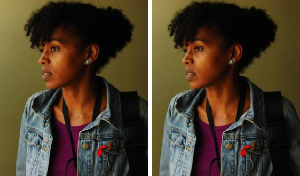Africa News of Tuesday, 7 March 2023
Source: face2faceafrica.com
Is the world 9? Here is why Ethiopian artist Aida Munuleh uses photography to prove this point
Aida Muluneh is a contemporary Ethiopian artist leading the charge in her home region to change the narrative portrayed in the global media about Africa. She has been a victim of war, read about famine in parts of the continent, and come across women and children who are malnourished, but she doesn’t believe it is enough justification for the foreign press to focus on these negatives to tell Africa’s story. There are many positive stories about the continent, and that is why she is investing her talent in her photography project.
Born in 1974 in Addis Ababa, Aida was compelled to live the next decade of her life in England, Yemen, Greece, Cyprus, and later Canada in 1985, due to the civil war in Ethiopia during her formative years, according to hundred heroines. However, her adventure across the globe was brought to a halt when she developed a passion for photography and decided to move back to Ethiopia.
This marriage with photography happened only after wandering along many career paths. She dabbled from being a basketball player to a lawyer until she had an epiphany in a disused darkroom where a Pentax 35-millimeter camera caught her eye. Since then, it’s been no turning back for Aida in her photography journey, she graduated from Howard University with a bachelor’s degree in film, radio, and television.
Her passion to relocate to her home region was also rekindled after briefly working at the Washington Post. It was during this period in her life that she became disturbed by the media’s consistent negative framing of Africa in their reportage. After relocating to Ethiopia in the 2000s, she was determined to work toward presenting an alternative narrative of what Africa stands for.
One of those works is “the world is 9,” an expression her grandmother often used to explain the imperfections of the world. She converted this philosophical expression into a series of photographic works that invites her audience to question life, love, history, and if the world should not be embraced in its imperfect and complete form.
One such piece is titled “All In One”, where Aida focuses on the various religions that define the history of Ethiopia. It first started with Christianity, then Islam, and later Judaism, which symbolizes the union of King Solomon and the Queen of Sheeba. It communicates the message that all religions exist in different forms but what matters is a person’s faith and spirituality, according to CNN.
She also addresses the pressure and conflict that exists between traditional and career women, which she titled “The Morning Bridge”. It depicts how many women are keen to get married as a result of pressure from their families. While there are those who want to be successful with both their careers and marriages but seem to be failing despite the effort, there are others who are desirous of a family but are unable to make the switch between their ambitions and this goal. Her work questions why women can’t have both successful careers and still stay married.
She also dedicates a part to Ethiopia’s 2,000-year history, which had been wiped away by the communist era. She called this “Departure” to coincide with her own experience as a child where she had to go and live in a foreign land because of the dysfunctional system. She uses the train station given as a gift to Emperor Menelik and Haile Selassie and what is left of this relic to tell the story of how Ethiopia fought colonial invasion and preserved its independence from Europe.
Entertainment










